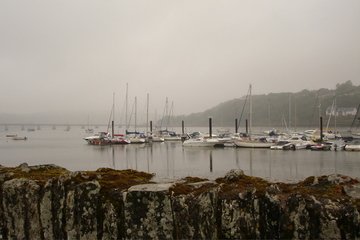The NY-NJ Harbor Estuary
What is an estuary?
An estuary is an area where a freshwater river or stream meets the ocean. In estuaries, the salty ocean mixes with a freshwater river, resulting in brackish water. Brackish water is somewhat salty, but not as salty as the ocean.
Water continually circulates into and out of an estuary. Tides create the largest flow of saltwater, while river mouths create the largest flow of freshwater.
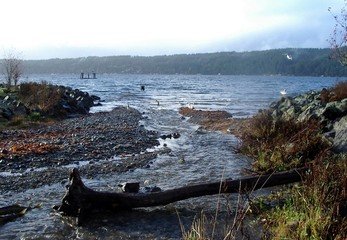
In estuaries, water level and salinity rise and fall with the tides, as well as with the seasons.
Estuaries are among the most productive and diverse natural systems on earth. When European explorers arrived in the NY-NJ Harbor Estuary, they encountered an astonishing natural abundance of marine animals. Henry Hudson reported “many salmons and mullets, of a foot and a half a piece, and a Ray as great as four men could hale into the ship.” Oyster beds extended from the mouth of the Raritan River to Yonkers. Each spring a great migration of giant sturgeon, shad and schools of herring moved through the Estuary and up its tributaries to spawn.

Located where the Hudson, Hackensack, Passaic, and Raritan rivers meet the ocean in the nation’s most densely populated metropolitan region, the NY-NJ Harbor Estuary teems with more than 200 different species of fish. More than 300 bird species crisscross the bays, creeks, and shorelines of the NY-NJ Harbor Estuary. The mixture of salt and fresh water provides a rich environment whose biological productivity and natural diversity is rivaled only by coral reefs and rain forests. Each day, the incoming tides bring in approximately 57 billion gallons of saltwater into the estuary from the ocean, with an average of 80 billion gallons of water returned to the ocean.
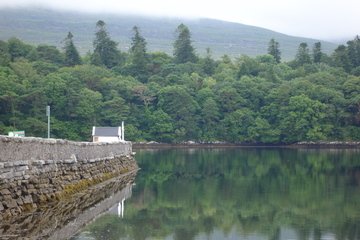
The NY-NJ Harbor Estuary marks the watery end of New York and New Jersey’s largest waterways, including the Hudson, Hackensack, Passaic, Rahway, Shrewsbury, Navesink and Raritan rivers. The Estuary is a living web of uplands, biologically-rich fresh and saltwater wetlands, beaches, straits and broad bays.
The Estuary feeds vast schools of migrating shad and herring, flocks of songbirds and raptors. It nourishes urban citizens who seek recreation and rejuvenation in nature. It is also the world’s most urban harbor — a metropolitan mosaic of shimmering glass towers, looping superhighways, and gritty refineries. It is a region teeming with wildlife, yet in need of ecological repair.

The Estuary cuts deeply into the U.S. Northeast coast, a 20-mile indent with 800 miles of shore. At the upper cusp is the western tip of Long Island. The Estuary swings counterclockwise from there and sweeps past New York City to New Jersey’s urban coast where the Hudson, Hackensack, Passaic, Rahway and Raritan meet the Bay. At the southern end is the needle-thin peninsula of Sandy Hook.

For more than three centuries, the NY-NJ Harbor Estuary suffered from pollution and habitat destruction. As the water’s health declined, oysters and clams became contaminated, fish suffocated or left for lack of oxygen and people stopped going to the water. At the same time, the natural areas on which fish, wildlife and birds depend were gradually overtaken by development. Most of the Estuary’s shoreline, wetlands, and tributaries were destroyed or altered. Much of its bottom habitat was disturbed through sand mining, dredging, and dumping. Fish, shellfish, birds, and wildlife lost areas critical for reproduction, feeding, and growth. These habitat areas were reduced to the bare minimum needed to sustain life in the NY-NJ Harbor Estuary.
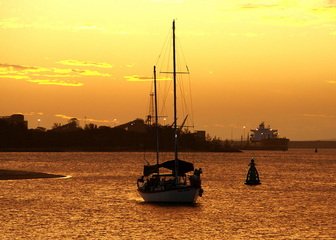
Water quality reached its lowest point in the 1960s. As we built sewage treatment facilities and reduced industrial pollution, the Estuary’s waters regained their health. For example, the average amount of dissolved oxygen in the Hudson River off 42nd Street doubled between 1974 and 1995. Habitat, however, is not recovering in the same way. “As a kid, I thought everybody used kerosene to wash the oil off your body after swimming,” recalls Raritan Riverkeeper Bill Schultz.
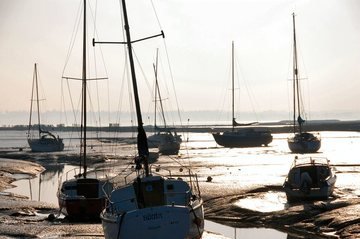
Although the rate of habitat loss, particularly in the wetlands, has declined somewhat since the passage of the Clean Water Act in 1972, areas already lost to development are not recovering on their own. Unlike water pollution, most habitat loss is permanent. Salt marsh cannot push through pavement; oysters cannot settle on muddied beds. If we hope to maintain and improve the populations of fish, birds, and wildlife in the Estuary, it is imperative that we protect, preserve, and restore the habitat that remains.
